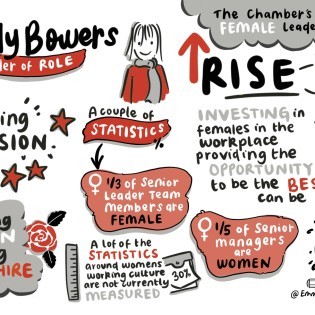We are fast approaching a new payroll landscape shaped by the Autumn Budget 2024. The significant changes will have a big impact on employers across the UK.
What are the key changes?
Coming into effect from 6 April 2025, changes to National Insurance Contributions (NIC)
- A reduction in the Secondary NIC Threshold for employers’ contributions. The Secondary Threshold (“ST”) is the earnings level before the amount paid to an employee is subject to Class 1 Employers NIC. Since 06 April 2022, this has been £9,100 per year (or £758 per month). From April 2025, this will be reduced to £5,000 (or £416 per month).
- An increase in the Employer's NIC rate. Currently, Employer's National Insurance Contributions are paid on 13.8% of earnings above the secondary threshold. From 06 April 2024, this will be increasing to 15%. These changes will also impact the amount of Class 1A & Class 1B paid on benefits in kind and PAYE Settlement Agreements (PSA), respectively.
- Employment Allowance eligibility. Currently, companies are eligible to claim the employment allowance if:
- They are registered as an employer (either as a sole trader, partnership or limited company)
- At least one employee is paid above the secondary threshold
- Where a limited company employs only directors, at least two directors must earn above the secondary threshold
- Employers in a group can only claim Employment Allowance on one company
- The Employers Class 1 NIC liabilities for the group must be less than £100,000 in the previous year.
From April 2025, the employment allowance eligibility criteria will change. Employers with Class 1 NIC of over £100,000 in the previous year can offset their NIC expenses.
- Increase in the Employment Allowance. Since 06 April 2014, employers have been able to reclaim a proportion of the employer's NIC costs using the Employment Allowance. From 06 April 2025, this will increase from £5,000 to £10,500 offering a higher level of NIC relief.
- Increase in the National Minimum Wage (NMW) From 1 April 2025.
The Low Pay Commission (LPC) made recommendations to the government on what the increases to the National Minimum Wage should be from 01 April 2025. On 29 October 2024, the government announced that it had accepted these recommendations.
| NLW 21 and over | 18 to 20 | 16-17 | Apprentice | Accommodation offset | |
| As of April 2024 | £11.44 | £8.60 | £6.40 | £6.40 | £9.99 |
| From 1 April 2025 | £12.21 | £10.00 | £7.55 | £7.55 | £10.66 |
How will these changes impact employers?
- The reduction in the secondary NIC threshold means employers will incur National Insurance contributions on a larger portion of employee earnings. This change will lead to higher payroll costs, particularly for businesses with a large workforce earning close to the threshold.
- The Employment Allowance Adjustments will provide relief to smaller businesses as the eligibility is expanding however larger businesses will experience increased expenses as they do not qualify.
- The National Minimum Wage increase will further raise payroll costs for employers namely those in sectors with a high proportion of minimum wage workers, for example, retail, hospitality and care services.
The above-mentioned added financial pressures will result in businesses assessing their hiring strategies, revising budgets and may consider adjustments to their workforce.
At Pierce, we have developed a comprehensive tailored report that estimates the potential financial impact of these new regulations.
The key benefits of this report:
- Detailed cost analysis specific to your business.
- Strategic insights to help you prepare for the changes.
- Actionable recommendations to mitigate potential increases in costs.
If you would like to receive your personalised report or discuss the upcoming changes, contact our payroll team on 01254 688110.
In addition, we are hosting a payroll event that you may find beneficial.
Enjoyed this? Read more from Pierce CA Ltd























